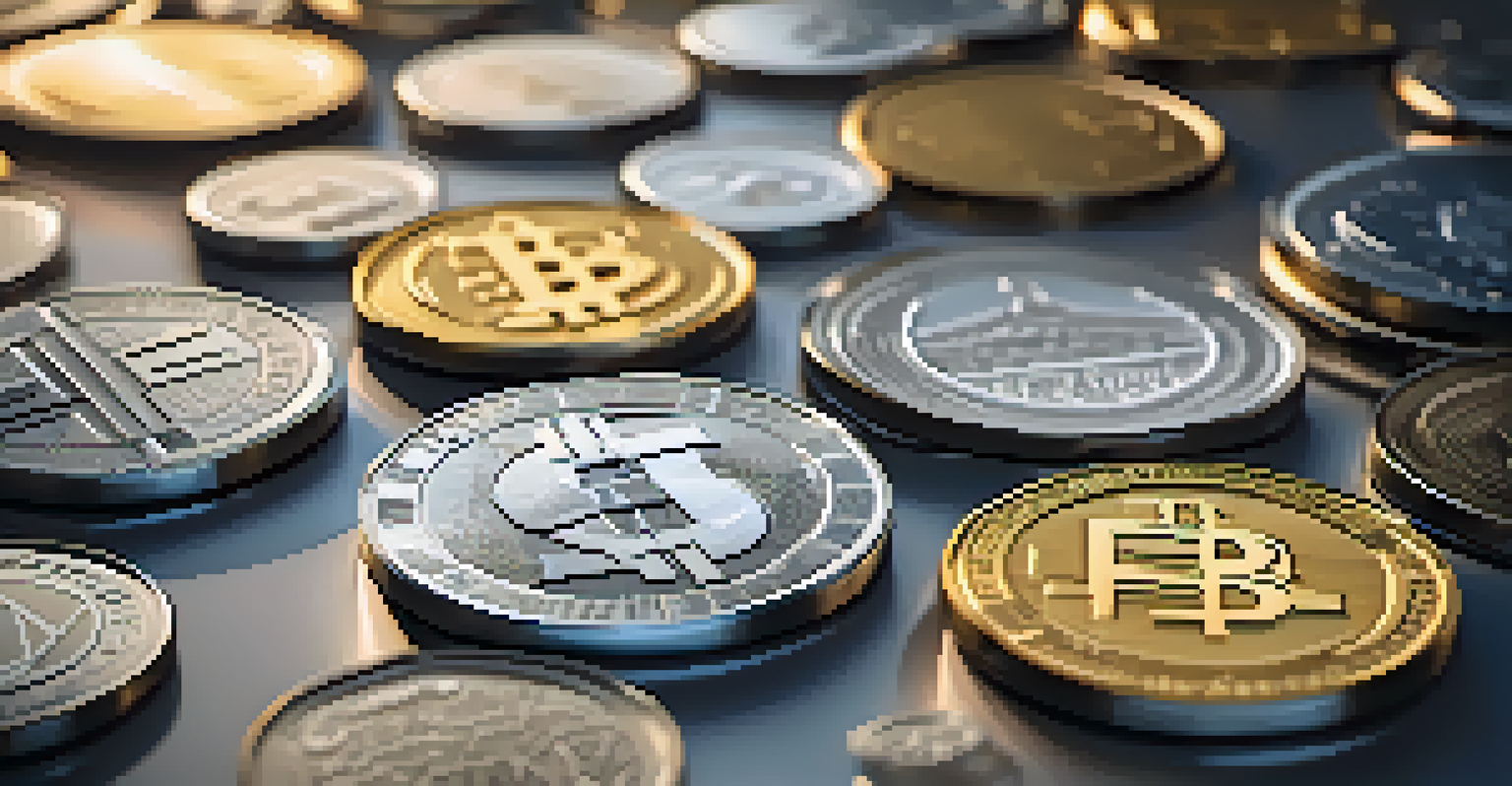How DeFi is Transforming the Lending Landscape for Users

Understanding DeFi: A Quick Introduction
Decentralized Finance, or DeFi, is a term that’s been making waves in the financial world. At its core, DeFi refers to financial services that operate without traditional intermediaries, like banks. Instead, it uses blockchain technology to allow users to lend, borrow, and trade directly with one another.
The future of finance is decentralized, and DeFi is leading the charge.
Imagine walking into a bank and being able to set your own interest rates or lending terms. This is essentially what DeFi enables, providing a level of control and transparency that traditional finance often lacks. Users can interact with smart contracts—self-executing agreements coded on the blockchain—that automate transactions securely and efficiently.
As DeFi continues to grow, it’s essential for users to understand its potential. It not only democratizes access to financial services but also opens the door for innovative lending practices that can cater to diverse needs.
How DeFi Lending Works: Breaking It Down
In a typical DeFi lending scenario, users can either lend their assets to others or borrow assets themselves. When lending, individuals provide their cryptocurrency to a liquidity pool, which others can borrow from. In return, lenders earn interest, often at rates higher than traditional banks offer.

Borrowers, on the other hand, can access funds without the lengthy approval processes inherent in traditional banks. Instead, they may need to over-collateralize—meaning they put up collateral that exceeds the value of the loan. This process reduces risk for lenders and ensures that loans are backed by adequate security.
DeFi Offers Direct Financial Control
Decentralized Finance enables users to lend, borrow, and trade without traditional intermediaries, granting them greater control and transparency in their financial transactions.
This system is built on transparency and accessibility, allowing anyone with an internet connection to participate. The decentralized nature of DeFi eliminates geographical barriers and opens up lending opportunities for individuals who might otherwise be excluded from the traditional financial system.
Benefits of DeFi Lending for Users
One of the most significant advantages of DeFi lending is the potential for higher returns. Lenders can earn interest rates that far exceed what traditional savings accounts offer, all while maintaining control over their assets. This makes DeFi lending an attractive option for those looking to grow their wealth.
Decentralized finance is not just a trend; it’s a shift that empowers individuals and fosters innovation.
Additionally, DeFi platforms operate 24/7, giving users the flexibility to lend or borrow anytime, without the constraints of bank hours. This around-the-clock access enhances user experience and caters to the fast-paced nature of the digital world.
Moreover, the transparency that comes with blockchain technology means users can track their transactions and interest rates in real time. This level of visibility fosters trust and empowers users to make informed financial decisions.
Risks and Challenges in DeFi Lending
While DeFi lending offers numerous benefits, it’s essential to acknowledge the risks involved. Smart contracts, while generally secure, can be vulnerable to bugs or exploits that may lead to loss of funds. Users must be cautious and do their due diligence before engaging with any DeFi platform.
Another challenge is the volatility of cryptocurrency prices. For borrowers, the value of collateral can fluctuate dramatically, potentially triggering liquidation if it falls below a certain threshold. This creates a risk for those who may not be prepared for sudden market shifts.
Higher Returns with DeFi Lending
Users can earn significantly higher interest rates through DeFi lending compared to traditional banks, while enjoying 24/7 access to their funds.
Lastly, the regulatory landscape surrounding DeFi is still evolving. Users need to stay informed about potential regulatory changes that could impact their lending activities, as this space is often subject to scrutiny and varying legal interpretations.
The Role of Stablecoins in DeFi Lending
Stablecoins play a crucial role in the DeFi lending ecosystem by providing a less volatile asset for transactions. Unlike traditional cryptocurrencies, stablecoins are pegged to stable assets like the US Dollar, making them more predictable and reliable for users.
By using stablecoins, borrowers can mitigate the risks associated with price fluctuations while still taking advantage of the benefits of DeFi. This stability allows for smoother lending and borrowing experiences, making it easier for users to manage their financial activities.
Moreover, the integration of stablecoins into DeFi platforms enhances liquidity, as these assets can be easily exchanged and utilized across various protocols. This interoperability is vital for the growth and efficiency of the DeFi lending landscape.
Real-Life Examples of DeFi Lending Platforms
Several DeFi lending platforms have emerged as leaders in the space, each offering unique features and benefits. For instance, Aave allows users to borrow and lend in a variety of cryptocurrencies, complete with innovative features like flash loans, which enable users to borrow assets without collateral for a short period.
Another notable platform is Compound, which lets users earn interest on their crypto by supplying it to liquidity pools. The interest rates are algorithmically determined based on supply and demand, providing a dynamic and responsive lending environment.
Risks and Stability in DeFi Lending
While DeFi lending presents exciting opportunities, users must be aware of the risks involved, such as smart contract vulnerabilities and cryptocurrency price volatility.
These platforms exemplify how DeFi is not only transforming lending but also creating new financial opportunities for individuals around the globe. As more users embrace these innovative solutions, the DeFi lending landscape continues to expand and evolve.
The Future of DeFi Lending: What Lies Ahead
As DeFi technology advances, the future of lending looks promising. We can expect to see increased integration with traditional financial systems, as more institutions recognize the benefits of decentralized finance. This could lead to hybrid models that combine the best of both worlds.
Additionally, innovation in user experience will likely make DeFi lending even more accessible. With user-friendly interfaces and educational resources, more individuals will feel empowered to engage with these platforms, leading to broader adoption.

Ultimately, the transformation of the lending landscape through DeFi is just beginning. As users continue to seek greater transparency, accessibility, and control over their financial futures, DeFi lending is poised to play a pivotal role in reshaping how we think about money.